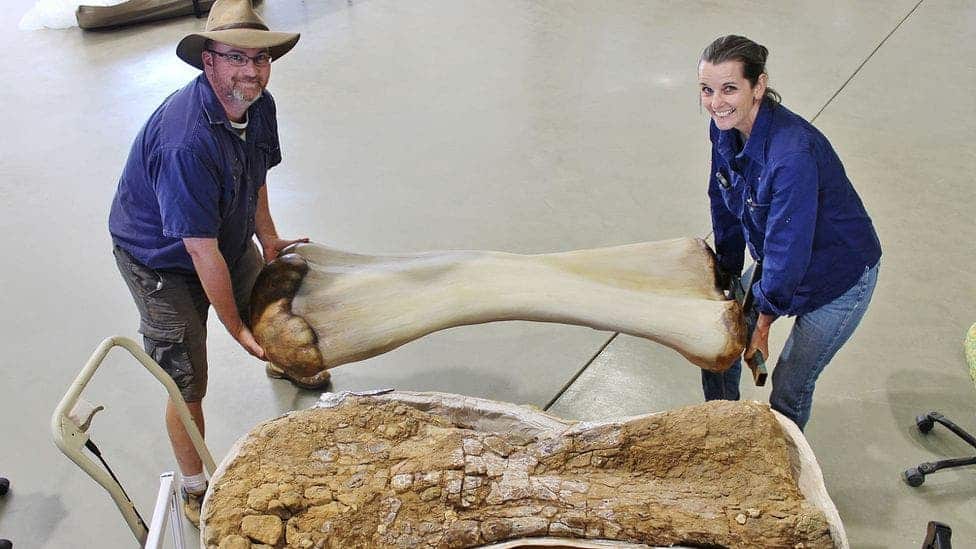A newly-identified titanosaurus, christened Australotitan cooperensis, is one of the 15 largest dino species we’ve ever found. And, so far, it seems to be the largest one ever uncovered in Australia.

According to estimations from experts, this “southern titan” could likely grow up to 6.5m (21ft) tall and 30m (98.5ft) long, which Google tells me is just a tad longer than a basketball court. Its fossil was discovered on a farm in southwest Queensland almost one decade ago, and paleontologists spent all that time trying to distinguish it from other known species, mostly by comparing scans of it to the bones of known sauropods.
Big-boned down under
The sauropods were a lineage of plant-eating dinosaurs that grew to awesome proportions. Their bulky bodies were fleshed out with very long necks and tails, thin, somewhat stumpy legs, and quite small heads (relative to their overall size). They lived during the Cretaceous period, between 92 to 96 million years ago, and were probably the largest animals to ever walk on dry land.
The new species was christened Cooper (cooperensis means ‘of/from Cooper’ in Latin) for the area where it was unearthed: Cooper Creek. The remote location of this site, as well as the impressive size of the fossils themselves and their condition, made the identification process that much longer. They were unearthed in 2007 on a family farm near Cooper Creek, Eromanga, Australia, on a family farm owned by two of the authors of this paper, Robyn and Stuart Mackenzie.

However, enough of the bones were found intact for researchers at the Queensland Museum and the Eromanga Natural History Museum to study and reliably identify.
It is closely related to three known sauropod species: the Wintonotitan, Diamantinasaurus, and Savannasaurus. This would mean that Australia’s largest dinosaur is, appropriately, part of one big family of big animals.
“It’s amazing to think from the first bones discovered by our son, the first digs with the Queensland Museum, through to the development of a not-for-profit museum that runs annual dinosaur digs, all have helped us to get to this point, it’s a real privilege,” Stuart Mackenzie said.
“Australia is one of the last frontiers for dinosaur discovery and Queensland is quickly cementing itself as the palaeo-capital of the nation – there is still plenty more to discover,” said Dr Jim Thompson, chief executive of the Queensland Museum Network.
The paper “A new giant sauropod, Australotitan cooperensis gen. et sp. nov., from the mid-Cretaceous of Australia” has been published in the journal PeerJ.


